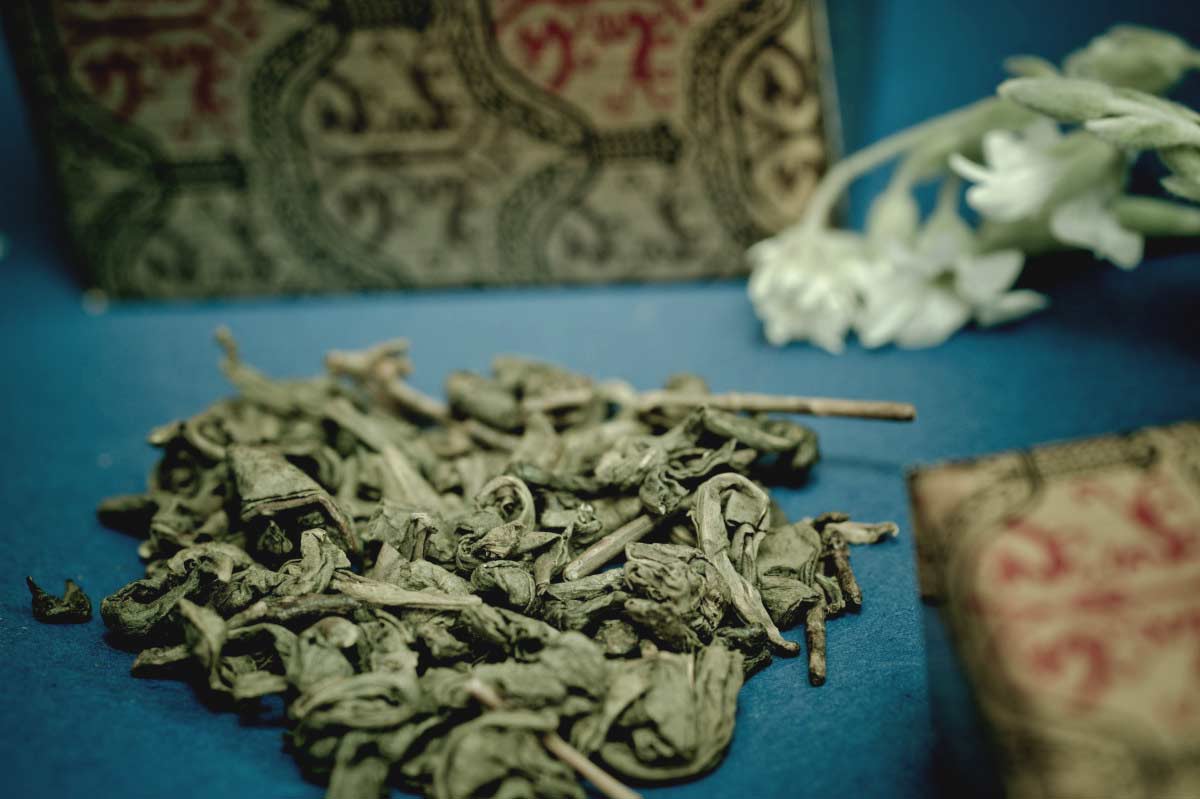History of tea, imagine a steaming cup of tea, its delicate aroma filling the air, inviting you to take a sip and savor its complex flavor. This seemingly ordinary beverage boasts a rich and fascinating history, stretching back millennia and weaving a captivating tale of cultural exchange, innovation, and global trade. Prepare to embark on a journey through time, as we explore the story of tea, from its mysterious origins in ancient China to its ubiquitous presence in our modern world.
A Legendary Beginning:
The exact origins of tea are shrouded in the mists of time, but legend offers a glimpse into its discovery. One popular tale tells the story of the Chinese emperor Shen Nung, a renowned herbalist, who ruled around 2737 BC. While boiling drinking water beneath a shade tree, a gentle breeze blew a few leaves from the Camellia sinensis plant into the pot. Intrigued by the resulting fragrant brew, the emperor took a sip and was said to be immediately struck by its invigorating properties. Thus, according to legend, tea was introduced to the world.
A Thesis Steeped in Exploration:
This article delves into the captivating history of tea, tracing its evolution from a cherished beverage in ancient China to a global phenomenon enjoyed across cultures. We will explore the development of tea cultivation and processing methods, its spread along the Silk Road, and its profound impact on various societies. Prepare to discover how tea ceremonies became a cornerstone of social interaction, fueled international trade, and even sparked artistic expression. Join us as we raise a metaphorical cup to this remarkable beverage and its enduring legacy.
A Journey Through Time: Key Events and Eras
The history of tea is a tapestry woven with threads of innovation, cultural exchange, and global trade. Let’s embark on a whirlwind tour of some key moments that shaped the story of this beloved beverage:
-
Ancient China (2737 BC – 16th Century AD): Following its legendary discovery, tea consumption became increasingly popular in China. Initially used for medicinal purposes, tea gradually transitioned into a mainstream beverage, enjoyed by nobility and commoners alike. Cultivation techniques were refined, processing methods evolved, and tea ceremonies became an integral part of social and cultural life.
-
The Silk Road (2nd Century BC – 15th Century AD): This network of trade routes stretching from China to Europe became a vital conduit for the spread of tea. Tea leaves were prized commodities, exchanged for other valuable goods like spices, silk, and porcelain. As tea caravans traversed mountains and deserts, they carried not just a beverage, but a taste of Chinese culture to distant lands.
-
The Rise of Tea in Different Cultures (7th Century AD – Present): Tea’s journey wasn’t linear. Different cultures embraced tea and adapted it to their unique customs and preferences. In Japan, the tea ceremony became a highly ritualized practice emphasizing mindfulness and tranquility. In Europe, tea became a fashionable drink among the elite, eventually finding its way into the homes of everyday people.
-
Global Trade and Social Impact (16th Century AD – Present): The European discovery of a direct sea route to China in the 16th century revolutionized tea trade. European powers established vast colonial empires in Asia, further increasing the global demand for tea. Tea plantations sprang up in countries like India and Sri Lanka, forever altering landscapes and economies. The social impact of tea was equally profound. Tea houses became popular social spaces, fostering conversation, relaxation, and a sense of community.
A Timeless Tradition: A Cup Steeped in History
The story of tea is a testament to human ingenuity, cultural exchange, and the enduring allure of a simple beverage. From its humble beginnings in ancient China to its global phenomenon status today, tea has woven itself into the fabric of human history. It has shaped economies, inspired artistic expression, and fostered connections across cultures and continents.
A Legacy that Endures:
The legacy of tea extends far beyond the enjoyment of a delicious beverage. Tea ceremonies continue to be practiced, preserving ancient traditions and promoting mindfulness. Tea cultivation remains a vital source of income for millions of people around the world. Perhaps most importantly, tea serves as a bridge between cultures, bringing people together over a steaming cup to share stories, laughter, and a sense of community.
A Toast to the Future:
The future of tea is as bright and flavorful as a perfectly brewed cup. As consumer preferences evolve, new trends emerge, and innovative processing techniques are developed. Tea continues to adapt and cater to a global audience. One thing remains certain: the captivating story of tea is far from over. New chapters are waiting to be written, with exciting discoveries about its health benefits, sustainable cultivation practices, and unique flavor profiles waiting to be
A Global Tapestry of Flavors:
The beauty of tea lies in its remarkable diversity. Just as cultures have embraced tea in unique ways, so too have they developed distinct flavor profiles and brewing traditions. Here’s a glimpse into this global tapestry of tea flavors:
-
China: The birthplace of tea continues to offer a staggering variety, from the delicate vegetal notes of green teas like Longjing to the robust, earthy character of black teas like Pu-erh.
-
Japan: Renowned for its ceremonial green teas like Matcha, Japan also boasts fragrant floral teas like Sencha and the unique roasted notes of Hojicha.
-
India: Black tea reigns supreme in India, with iconic varieties like Assam known for their malty richness and Darjeeling celebrated for its muscatel flavor.
-
Africa: African tea production is on the rise, offering unique black teas from Kenya and Rwanda with bright, citrusy notes, as well as fragrant rooibos herbal tea boasting a naturally sweet flavor.
A Brewing Revolution:
Traditionally, tea was brewed using loose leaves and simple brewing methods. However, the modern world has introduced a wave of innovation when it comes to enjoying this timeless beverage. Tea bags, offering convenience and ease of use, have become a staple in many households. Single-estate teas, sourced from specific regions and offering distinct flavor profiles, cater to discerning palates. Cold brew teas, perfect for a refreshing summer drink, are gaining popularity. These advancements ensure that tea remains relevant and accessible to a wide audience.
Beyond the Cup: Health and Wellness
For centuries, tea has been valued for its purported health benefits. Modern scientific research is now exploring the potential of tea to support overall well-being. Green tea, for example, is rich in antioxidants and may offer benefits for heart health. Black tea can provide a natural boost of energy, while herbal teas like chamomile can promote relaxation. While more research is needed, the potential health benefits of tea add another layer to its enduring appeal.
Unveiling the Mystery: The Early Days of Tea in China
Tea, the world’s most beloved beverage, boasts a rich and fascinating history steeped in legend, tradition, and cultural significance. Our journey begins in China, where the story of tea unfolds like the delicate leaves themselves, whispering tales of ancient emperors and the gradual rise of a national obsession.
Legendary Beginnings – A Steamy Cup of Folklore
Legend has it that tea’s discovery was a fortuitous accident. Around 2737 BC, the mythical Chinese Emperor Shen Nung, renowned for his knowledge of herbal medicine, was said to be sitting beneath a tree while his servant boiled water for drinking. A gentle breeze rustled the leaves of the tree, and a few fluttered down into the pot of boiling water. Intrigued by the fragrant aroma that emerged, the emperor decided to taste the infusion, thus unknowingly giving birth to the tea tradition.
While the historical accuracy of this legend remains debatable, it beautifully captures the essence of tea’s origins – a chance encounter that blossomed into a national treasure. The story of Shen Nung highlights the deep connection between tea and Chinese culture, where its consumption was seen as not just a pleasurable experience but also a potential path to well-being.
From Medicine to Beverage – A Gradual Transformation
The early use of tea in China revolved primarily around its medicinal properties. Historical texts from the Han Dynasty (206 BC – 220 AD) mention tea’s use for treating various ailments, including headaches, fatigue, and digestive issues. These early references paint a picture of tea as a valued medicinal elixir, consumed by healers and possibly even the imperial court.
However, over time, tea began to transcend its purely medicinal purpose. As cultivation practices improved and tea became more readily available, it gradually transitioned into a daily beverage enjoyed by the elite. The act of drinking tea became a mark of sophistication and refinement, a way to unwind and socialize among the upper classes. This shift in perception laid the foundation for the rich tea culture that would flourish in the centuries to come.
The Tang Dynasty and the Rise of Tea Culture – A Golden Age of Appreciation
The Tang Dynasty (618-907 AD) marked a golden age for tea in China. During this period, tea consumption soared to new heights, and a distinct tea culture blossomed. Elaborate tea ceremonies became a cornerstone of social gatherings, with specific rituals and equipment used for brewing and appreciating the beverage.
The Tang Dynasty also witnessed the invention of tea cakes, a revolutionary innovation that involved compressing loose tea leaves into compact bricks. These tea cakes were easier to store and transport, facilitating the spread of tea across China and beyond its borders.
Furthermore, the Tang Dynasty saw the rise of tea literature. The renowned writer Lu Yu penned the “Cha Jing” (The Classic of Tea) in 760 AD, considered the most significant historical text on tea. This comprehensive treatise documented tea cultivation, processing, brewing methods, and the various types of tea available during that era. The “Cha Jing” serves as a testament to the deep appreciation and intricate knowledge surrounding tea in China during this golden age.
The story of tea’s early days in China is a captivating blend of legend, medicinal exploration, and the gradual rise of a national obsession. From the mythical beginnings to the flourishing tea culture of the Tang Dynasty, these early chapters set the stage for tea’s remarkable journey across the globe, eventually reaching your cup and becoming a beloved part of cultures worldwide.
Beyond the Borders: Tea Travels the Silk Road
For millennia, tea remained a treasured beverage primarily within China’s borders. However, the story takes a fascinating turn around the 2nd century BC with the rise of the Silk Road, a network of trade routes that snaked its way across continents, connecting China with the West. This ancient highway became a crucial pathway for tea, propelling the humble leaf on a journey that would forever change the global beverage landscape.
The Silk Road – A Pathway for Tea: Threads of Commerce and Culture
Imagine bustling caravans laden with exotic goods, traversing vast deserts and snow-capped mountains. This was the essence of the Silk Road, a vibrant artery of commerce and cultural exchange. Spices, silks, and precious metals were just a few of the treasures that flowed along this network, and soon, tea joined the ranks of these coveted commodities.
Chinese emperors strictly controlled the export of tea, recognizing its economic and cultural significance. However, enterprising merchants found ways to smuggle tea seeds and saplings along the Silk Road, gradually introducing tea cultivation to other parts of Asia. As tea traveled westward, it captured the hearts (and taste buds) of people from diverse cultures. From the bustling marketplaces of Central Asia to the opulent courts of the Middle East, tea became a symbol of sophistication, health, and social refinement.
A Catalyst for Cultural Exchange: The Silk Road wasn’t just about commerce; it was a conduit for cultural exchange. As tea spread westward, it carried with it traditions and rituals associated with its consumption. The elegant art of Chinese tea ceremonies, with their meticulous brewing methods and emphasis on mindfulness, began to influence tea customs in other cultures. However, these traditions weren’t simply copied; they were adapted and reinterpreted to reflect local preferences and customs.
A Global Beverage is Born: The journey of tea along the Silk Road wasn’t a one-way street. New flavors and brewing methods were introduced to the Chinese through contact with other cultures. For example, the addition of milk and sugar to tea, now a popular variation in many parts of the world, is believed to have originated in Central Asia or the Middle East. The Silk Road transformed tea from a cherished Chinese beverage into a global phenomenon, setting the stage for its enduring popularity across the world.
Cultural Adaptations – A Tapestry of Tea Traditions
As tea traveled across continents, it seamlessly integrated into diverse cultures, giving rise to a rich tapestry of tea traditions. Here are a few examples:
-
Japan: In Japan, tea ceremonies became a highly refined art form known as Chanoyu, emphasizing harmony, respect, and mindfulness. Loose tea leaves are whisked into a frothy beverage using a bamboo whisk, creating a unique and visually stunning tea experience.
-
India: India boasts a vibrant tea culture with its unique flavors and brewing methods. Chai, a spiced black tea infused with milk, sugar, and aromatic spices like cardamom and ginger, is a national beverage enjoyed throughout the day.
-
Tibet: In the high altitudes of Tibet, a unique tea tradition known as “butter tea” emerged. Black tea is churned with yak butter, salt, and sometimes barley flour, creating a rich and nourishing beverage that helps combat the harsh Himalayan climate.
These are just a few examples of how different cultures embraced tea and adapted it to their own preferences and social customs. The beauty of tea lies in its versatility; it can be enjoyed plain or with a variety of flavorings, hot or cold, in a formal setting or during a casual gathering.
The Rise of the Tea Horse Road – A Mountainous Path to Riches
While the Silk Road connected China with the West, another vital trade route emerged specifically for the transportation of tea – the Tea Horse Road. This network of mountainous paths snaked its way through the rugged terrain of Southwest China, connecting it to Tibet and Southeast Asia. Horses were the primary mode of transport on this challenging route, hence the name “Tea Horse Road.”
A Barter System for Treasured Leaves: Tea was a precious commodity in Tibet, valued for its medicinal properties and ability to ward off the cold. Tibetans, in turn, offered horses, a vital resource for the Chinese military, in exchange for tea. The Tea Horse Road wasn’t just about commerce; it fostered cultural exchange between China and Tibet, with tea houses serving as social hubs along the route.
The legacy of the Tea Horse Road lives on today in the form of ancient tea houses nestled amidst breathtaking mountain scenery. Traveling this historic route offers a glimpse into a bygone era where tea wasn’t just a beverage, but a currency and a catalyst for cultural exchange.
A Brew for Emperors and Samurai: Tea in Japan
The story of tea transcends geographical boundaries, weaving a rich tapestry across cultures. Our journey now takes us to the enchanting land of Japan, where tea has transcended from a simple beverage to a deeply spiritual and cultural practice. From the meditative tranquility of the tea ceremony to the vibrant green essence of matcha, tea has left an indelible mark on Japanese history and society.
Zen and the Art of Tea – A Ceremony of Mindfulness
Step into a serene tea room in Japan, a haven of simplicity and elegance. The air is filled with the subtle aroma of freshly whisked matcha. This is the setting for the Japanese tea ceremony, known as Chanoyu, a meticulously choreographed ritual steeped in Zen Buddhist philosophy. Chanoyu is more than just about consuming tea; it’s a journey of mindfulness and focused appreciation for the present moment.
The Art of the Host: The host meticulously prepares every aspect of the ceremony, from the selection of tea utensils to the arrangement of the tea room. Each movement is deliberate and graceful, reflecting the core principles of Zen Buddhism – discipline, respect, and harmony.
A Shared Experience: Guests participate in the ceremony with reverence, each action imbued with meaning. The focus is on the sensory experience – the visual beauty of the tea bowl, the delicate aroma of the matcha, and the gentle sound of the whisk against the bowl. Sipping the tea becomes a mindful act, allowing participants to appreciate the subtle flavors and textures.
Beyond Ritual: The tea ceremony transcends its ritualistic aspects. It fosters a sense of peace and tranquility, a welcome respite from the frenetic pace of everyday life. It cultivates a deep appreciation for simplicity and beauty, reminding us to find joy in the present moment.
The Rise of Matcha – A Green Powdered Treasure
Matcha, a finely ground green tea powder with a vibrant emerald hue, is a cornerstone of the Japanese tea ceremony. Its origins can be traced back to the 12th century when Buddhist monks brought tea seeds from China to Japan. Matcha cultivation flourished in Japan, and the meticulous process of grinding the tea leaves into a fine powder was developed.
The Art of Matcha Making: The production of high-quality matcha is a labor of love. Tea bushes are shaded for weeks before harvest, promoting the production of chlorophyll and enhancing the tea’s vibrant green color. The meticulously selected leaves are then steamed, dried, and painstakingly ground into a fine powder.
Matcha’s Allure: Matcha’s appeal lies not just in its vibrant color but also in its complex flavor profile. It offers a unique combination of umami (savory), sweetness, and a hint of bitterness. Beyond its flavor, matcha is prized for its health benefits, containing high levels of antioxidants and L-theanine, an amino acid known for promoting relaxation and focus.
Matcha Beyond the Ceremony: While matcha remains central to the tea ceremony, it has transcended its ritualistic roots and woven itself into the fabric of Japanese life. Matcha is enjoyed in a variety of ways, whisked into lattes, blended into desserts, or even sprinkled over savory dishes.
Tea as a Status Symbol – A Mark of Refinement
Tea, particularly matcha, has historically held a significant place in Japanese society. During the feudal era, tea appreciation was a mark of social status and cultural refinement. The ability to properly prepare and participate in the tea ceremony was considered a sign of breeding and education. Wealthy families invested in exquisite tea utensils, and tea gatherings became a platform for social interaction and cultural exchange.
A Legacy of Appreciation: Even today, tea continues to be a revered beverage in Japan. While the formality of the tea ceremony might not be as prevalent in everyday life, the appreciation for high-quality tea and the act of mindful consumption remains deeply ingrained in Japanese culture. Stepping into a traditional teahouse or witnessing a tea ceremony is a window into the soul of Japan, a land where a simple cup of tea transcends beverage to become a cultural and spiritual experience.
Beyond the Cup: The Legacy of Tea
Tea’s captivating story extends far beyond the steaming cup in your hand. For millennia, tea has transcended cultures, continents, and social barriers, weaving a rich tapestry of history, tradition, and shared experiences. Let’s delve deeper into the enduring legacy of this remarkable beverage.
A Steamy Bridge Between Cultures: The Power of Tea in Fostering Connections
Imagine bustling tea houses along the Silk Road, filled with people from diverse backgrounds sipping tea and engaging in lively conversation. Throughout history, tea has catalyzed cultural exchange, fostering connections and dialogues between different societies. The tea trade routes became arteries of not just commerce, but also of ideas, customs, and artistic expression.
-
A Catalyst for Exploration: The insatiable European thirst for tea during the 17th and 18th centuries fueled voyages of exploration and discovery. These expeditions, while driven by the pursuit of tea, also led to a cross-pollination of cultures, with new foods, fabrics, and philosophies finding their way back to Europe.
-
A Meeting Place for Minds: Tea houses in Asia served as vibrant social hubs, where scholars, artists, and merchants gathered to discuss philosophy, literature, and the latest news. Over steaming cups of tea, ideas were exchanged, friendships were forged, and artistic collaborations blossomed.
The tradition of tea continues to bridge cultures today. Sharing a pot of tea with friends, family, or colleagues from different backgrounds fosters a sense of camaraderie and understanding. The simple act of brewing and sipping tea creates a space for meaningful conversation and the celebration of shared humanity.
A Cup Full of Potential: Exploring the Health Benefits of Tea
For centuries, tea has been revered for its potential health benefits. Modern science is now lending credence to these traditional beliefs. While research is ongoing, studies suggest that tea consumption may offer a range of health advantages:
-
Antioxidant Powerhouse: Tea is brimming with antioxidants, natural compounds that help protect cells from damage. These antioxidants may play a role in reducing the risk of chronic diseases like heart disease and cancer.
-
Boosting Cognitive Function: Feeling foggy-brained? A cup of tea might be just what you need. Studies suggest that tea consumption may improve cognitive function, memory, and focus. The caffeine content in some teas can provide a gentle alertness, while other teas contain L-theanine, an amino acid that promotes relaxation and focus.
-
Stress Reduction: Steeping a cup of tea and engaging in the ritual of mindful sipping can be a powerful tool for stress reduction. The combination of L-theanine and the calming act of brewing and drinking tea can promote relaxation and ease anxiety. Business – Money Making – Marketing – E-commerce
It’s important to remember that these are potential benefits, and individual experiences may vary. Consulting with a healthcare professional is always recommended before making significant changes to your diet or lifestyle.
Brewing a Sustainable Future: Fair Trade and Environmental Responsibility
As the global tea industry flourishes, ensuring its sustainability becomes increasingly important. Here’s how we can work towards a future where everyone can enjoy a cup of tea with a clear conscience:
-
Fair Trade Practices: Fairtrade certification ensures that tea farmers receive fair compensation for their labor, allowing them to invest in their communities and live a dignified life. Choosing fair trade tea allows you to support responsible sourcing and empower tea-producing communities.
-
Environmentally Friendly Farming: Sustainable farming practices that minimize environmental impact are crucial for the future of tea production. Look for teas that are organically grown and that prioritize soil health and water conservation. By supporting such practices, we can ensure a thriving tea industry for generations to come.
Together, we can make a difference! By seeking out fair trade and sustainably sourced teas, we can contribute to a more equitable and environmentally conscious tea industry.
A Ritual for All: More Than Just a Beverage
Tea consumption transcends the act of simply ingesting a beverage. It’s a ritual, a practice steeped in tradition and mindfulness. The act of brewing tea, from carefully selecting the leaves to the gentle pouring of hot water, invites us to slow down and be present in the moment.
Sharing a pot of tea with loved ones fosters a sense of connection and well-being. The gentle aroma, the warmth of the cup in your hands, and the act of savoring each sip create a space for relaxation and reflection.
Whether you’re enjoying a solitary cup of tea in the quiet of the morning or sharing a pot with friends, embrace the ritual. Let tea be your companion on your journey to mindfulness, connection, and a sense of well-being. So, steep yourself in a cup, savor the flavor, and appreciate the rich legacy of this remarkable beverage. Tea, Coffee, Energy Drinks, Juice, Beverage, Smoothie, and more
Other Interesting Articles
- 20 Proven Health Benefits of Drinking Tea Before Having Sex
- 22 Proven Health Benefits of Drinking Tea Before Bedtime
- 21 Proven Health Benefits of Drinking Black Tea with Milk
- 21 Health Benefits of Scottish Afternoon Tea, Side Effects
- 20 Health Benefits of Assam Tea: Recipe, Side Effects
- 22 Health Benefits of English Breakfast Tea, Side Effects
- 18 Health Benefits of Darjeeling First Flush Tea, Side Effects
- 21 Health Benefits of Chinese Black Tea: Recipe, Side Effects
- 20 Health Benefits of Duchess Grey Black Tea, Side Effects
- 21 Proven Health Benefits of Drinking Tea in Kulhad (Kulhar)
- 20 Proven Health Benefits of Drinking Tea while Pregnant
- 22 Health Benefits of Drinking Green Tea After Workout
- 24 Health Benefits of Drinking Chamomile Tea in the Morning
- 21 Proven Health Benefits of Drinking Tea Instead of Coffee
- Drinking Milk Tea in the Morning On an Empty Stomach: Pros, Cons
- 21 Proven Health Benefits of Drinking Black Tea in the Morning
- 21 Hidden Disadvantages of Drinking Excessive Tea At Night
- 22 Silent Disadvantages of Drinking Tea After Meals
- 20 Benefits of Drinking Green Tea in the Morning Empty Stomach
- 50 Most Popular Types of Non-Alcoholic Beverages & Drinks




